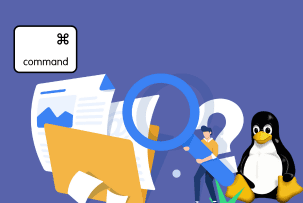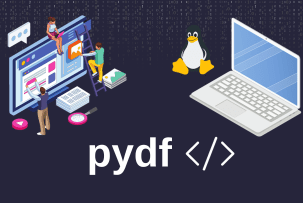8 Best Lightweight Linux Distros for your old hardware
09:03, 16.10.2023
New software is designed or updated almost on a daily basis and sometimes it can be really hard to catch up with existing hardware. To help with the better performance of your old PC, you may consider the choice of lightweight apps.
The same relates to the Linux distros, some may suit your laptop some may not. You don’t need to run to the nearest store and purchase the latest PC for a good performance, just choose a distro that will suit your hardware perfectly. Luckily, there are lots of distributions that are lightweight and can work almost on any device.
In this article, you will get the basic information about the top 8 distributions for Linux users that will work perfectly fine with old PCs.
Puppy Linux
This OS is so popular among users due to the easiness of its usage, and the smallest possible requirements for the memory footprint. The requirements for the system are so minimal that even the PCs from the 1990s can smoothly run with this OS.
The distribution is really lightweight so you should not expect tons of preinstalled applications. The standard package will contain a player, AbiWord, the simplest web browser, Gnumeric, and of course the utility for packages’ download.
Except for the easiness of usage, this OS has a really simple installation. That is a huge advantage when compared with other Linux distributions. Just download a pack and click the installation button, choose the language and the system will complete everything automatically.
This OS is portable and customizable, the only huge disadvantage is the limitation of software variability. Also, as a lightweight distro, it may need more configuration than others.
Lubuntu
This is a lightweight variant of the extremely used Ubuntu distribution. The initial plan was to create something suitable for old devices that is easy and fast in functioning. Together with this OS, there is LXDE environment that is also considered to be very customizable and lightweight.
When speaking about the preinstalled software, you will immediately have access to a word processor, browser, player, graphics painting, webcam, and many others. Except for already preinstalled apps, there is access to Ubuntu repositories via which you can install absolutely any soft that is designed for Ubuntu users. Despite a huge variability of applications, it is highly recommended not to overload the system with everything at once if you are using old PCs. For the users of the latest hardware, there are no restrictions in terms of soft installation.
The minimum requirements for the installation of Lubuntu are 1GB of RAM and CPU should be Pentium M, Pentium 4, AMD K8, or higher.
Bodhi Linux
This is one more lightweight distro that is easy and customizable in usage. Initially, this package is installed together with Moksha environment. This desktop can be characterized as customizable where you can change anything starting with keyboard shortcuts and ending with themes.
Due to the Ubuntu repository, there is a huge variability of software that is already preinstalled and which you can download on your own. Nevertheless, don’t forget to use fewer apps especially if you are using an ancient PC. By minimizing the software you are helping the system with uninterrupted functioning.
The minimum requirements for the usage of this OS are 256 MB of RAM, 500MHz processor, and 5GB of storage. As you see, most of the old computers can function on Bodhi without any technical issues.
Zorin OS Light
The aim of Zorin design was to create a secure system with good performance that worked perfectly fine. Those programmers who were working with the Light version were planning to make an even slimmer system with the same characteristics of safety and functionality.
This system functions on PCs with only 1GB of RAM and as minimum as 10GB of storage. So most old devices can use Zorin Light.
A great thing is that this OS is really similar to Windows UI. So, users can apply free distribution that will have some similarities with popular Windows. Isn’t that awesome?
LXLE
This is the most recent distribution which was mainly based on Lubuntu release. This OS offers the usage of LXDE environment for the better functionality of the system. Of course, this is a lightweight version and it is mainly focusing on visualization.
Except for the already mentioned LXDE as a basic desktop for this distro, any user can change it and use other environments instead. Luckily, there is no shortage in the variability of choice.
This lightweight distro will suit old hardware perfectly fine. However, it doesn’t mean that users of the latest PCs could not try LXLE. Just on the contrary, any user with any hardware characteristics can enjoy the great visual aesthetics of this distribution.
Xubuntu
This is another version of Ubuntu that comes together with XFCE environment. This is of course a lightweight version and this initial desktop environment has more features than other similar variants.
The OS will suit perfectly for both experienced and new users of the Linux system. The main aim of this distributive was to create an extra responsive variant with high speed for the old hardware, which has already being used by the majority of users. They coped with this task perfectly fine.
As of the recent information, the latest release of the system was 4 months ago. So it is regularly updated and that helps a lot with the smoother functioning of the system in general.
Peppermint
This is one more powerful solution for the users of old PCs. If you have huge troubles with macOS or Windows, then why not try something lightest? Peppermint will be a good option for older devices.
The environment that is applied together with this OS is LXDE. It was mainly designed to work flawlessly with limited access to memory. The minimum requirement for its installation is 512MB of RAM. So, it will function perfectly fine on your old machine on Core 2 Duo or Pentium 4.
Cloud support of this OS makes it so much easier to store your data on the web apps and don’t lose the functionality and speed of your real device.
As for the user experience, this distribution is simple in installation and navigation. Even clients who haven’t used Linux products before won’t have any difficulties with its management. The menu is intuitive and understandable so no problems will emerge.
The best thing as with all Linux distributions is that you can use it for free. Just install this version, try all the available functions, and delete it without any trouble. You are not losing anything, just a couple of minutes and you have your personal experience with this OS and no circumstances.
AntiX
This is an excellent variant for those users who have troubles with finding functional soft for an old machine. The minimal requirements for the proper functioning of the OS are such as 64MB of RAM and processor Pentium II. Even though these system requirements are minimal, users still could enjoy a full desktop experience.
AntiX is installed together with a pack of preinstalled applications such as word processor, painting tool, tools for networks, managing, and services tools.
This distribution is designed on the basis of Debian. So that most Linux users will not have problems with the management and usage of the system. If you are a new client, there won’t be a problem as well, due to the easy and almost intuitive installation process.
The benefits of the distro are high configuration and frequent updates so there won’t be a necessity of a new version installation. And of course, the minimal requirements mean that any old device can work perfectly fine with AntiX.
Summing up
If you have tried Windows, macOS, and a couple of Linux OSs, and nothing works well on your device then you have probably not used a lightweight version of Linux. These systems are specifically designed for old hardware and absolutely any PC can work perfectly fine with these OSs.
When choosing the distributor, pay attention to the preinstalled soft, requirements for the system, UX characteristics, and more. Here we have briefly discussed AntiX, Peppermint, Xubuntu, LXLE, Lubuntu, Puppy Linux, Zorin OS Light, and Bodhi. So now you have a couple of good variants to start from in your search for your ideal Linux OS.


